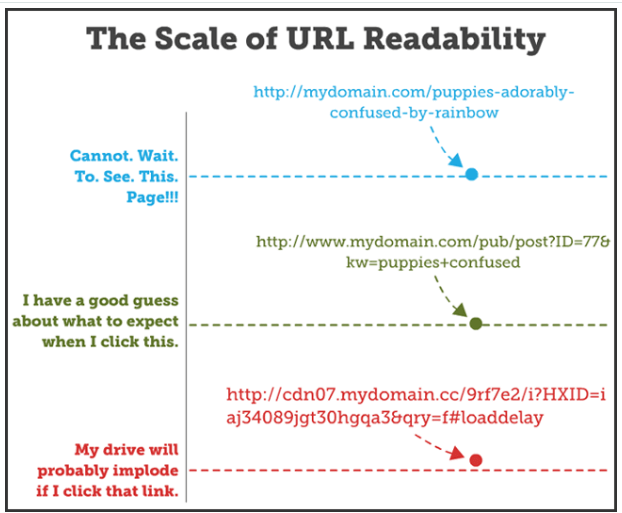How to Make the Perfect URL
We talk a lot about the components of good SEO. On page, content strategy, link building, and everything else that makes for strong, healthy SEO. Because SEO is such a forward-thinking practice, the basics can fall by the wayside. For that reason, it can sometimes be helpful to revisit the fundamentals of good SEO and online presence to make sure you’re covering all your bases.
One such fundamental that’s as basic to your site’s existence as anything else is URL structuring. While it isn’t by any means an absolute must or deal-breaker for SEO, having optimized URL structures can have some really positive benefits, like:
- Having more clickable links
- Making it easy for search engines to crawl your site
- Finding yet another way to clean up your online presence for optimum ranking position
Who wouldn’t want all that?
Before we get to the how, let’s take a look at the why:
Despite the fact that it isn’t imperative for a successful website, having bangin’ URL structures can really make for a more ideal SEO situation. By that, I mean:
- Short, clean URLs are easier for both users and search engines to read. One of my favorite images explaining this comes from Moz:
So, as you can see, a concise and well-structured URL can positively affect user experience because the user is even on your website. Having URLs that entice clicks and drive user interest will send all the right signals to search engines measuring what users are and are not engaging with.
- Studies have shown that the top ranking URLs are shorter in length and contain fewer extraneous characters.
I’m talking about the $#@%-&* symbol action you see at the end of a URLs sometimes. One study found that only .194% of top ranking websites use extraneous characters in their URLs, which is a pretty clear indicator of why you shouldn’t use them.
So, how should you structure your URLs?
A few rules to guide you:
- Use keywords in your URLs, because it tells users what to expect from the link and increases the likelihood that they’ll click on it.
- Try and keep it short. That means a single domain/subdomain, few (if any) characters, and 100 or less characters. Again, this doesn’t mean that a longer URL can’t be successful, it just means that shorter URLs have a better success rate.
This image is a helpful formula for understanding what your URL structure should ideally look like:
Whenever possible, try and stick to the simplicity of this structure. It’ll help give your URLs a clear, crawlable, and click-friendly design that will further supplement your SEO.


